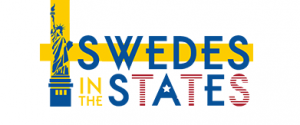We recently wrote an article about Swedes being one of the most well-traveled citizens in the world, and Americans one of the least well-traveled. The article brought a whole new discussion to the table about the policies that most Americans employees have versus the policies that exist for Scandinavian employees, making it possible for Swedes to travel internationally more often. Apart from the obvious reason that it is easier to make an international trip from Sweden than it is from the United States, other arguments like vacation and parental leave policies were discussed.
We decided that we wanted to dig deeper into that topic. How different do you think the parental leave policies are in Sweden versus the United States?
General Policies in Sweden
Nordic countries have some of the most generous and equal parental leave policies in the world. Sweden provides a very family-friendly environment to new parents and offers ample support to employees at all levels. Here are some points to note:
- Swedish parents can get access to 480 days of paid parental leave and one or the other parent has to take at least 90 days, which means fathers get paid leave as well.
- Women working in labor-intensive and strenuous jobs are entitled to additional benefits before and after childbirth.
- Parents are entitled to family leave whether they give birth or adopt. Which makes parents in same-sex relationships able to take days off.
- For that first 390 days, parents are entitled to 80% of their salary while the remaining 90 days are paid by flat rate.
What kind of parental leave does America offer?
In the United States, for the most part, the parental leave policies are left up to the individual employers and companies bear the cost burden with little support from the government. This allows businesses to pick and choose what kind of parental leave they offer. Others provide little to no parental leave and the benefits are distributed unequally amongst employees at different levels.
Is there a light at the end of the tunnel?
During the Clinton era, the Family Medical Leave Act that was introduced. The act offers 12 weeks of job-protected leave but was however unpaid and for different reasons isn’t available to everyone employed in the United States. A combination of private and public policies grant only 12% of US non-government workers access to paid leave.
Even the new policy initiated by the Trump administration lags far behind other countries when it comes to paid leave and is specially targeted towards women so there’s no similar protection offered to new fathers. Experts have called the family cover insufficient because it only offers women 6 weeks of paid leave with an equivalent of 2.8 weeks of salary.
This can be claimed under unemployment benefits rather than rightfully earned salary. Six weeks is a very short leave and doesn’t allow the mother enough time to recover, much less bond with her child. This is light years behind the policies provided by other industrialized nations in the world.
Why we think the United States should adopt a kinder vacation/parental leave policy for people working:
The benefits of a parental leave similar to the Scandinavian policies are many. Not only for the child but also for the parents.
• The biggest benefit of better parental leave policies is the recovery of child and mother, and the opportunity for both parents to bond with the child.
- It’s easier for parents to go back to work when they are ready, instead of having to make the choice to quit or be a stay at home parent in order to be there for their child’s first months on earth. In the United States, it would make it easier for the women who want to, to re-enter the workforce.
- Pregnancy and birth can be hard on the mother’s body and allow her ample time to recover from the physical and mental strain benefits the mother, child, and the family as a whole.
- Raising a child is stressful enough, with parental leave, job security, and financial stability; parents have a better time adjusting and can provide better care to their child.
Although the American government fails to understand the importance of parental leave and facilitating raising children with both parents (if possible) involved, the corporate world is starting to react. Companies like Apple, Ikea, Nordstrom, Bank of America, and Levi’s, etc. offer substantial maternity benefits across the board and have equal policies more similar to the ones found in Scandinavia. Scandinavian corporations with offices in the United States were some of the first to adopt Scandinavian policies in the workspace offering their U.S. employees benefits they rarely had seen before.
With the stress companies today face with retaining talent, vacation and parental leave policies are changing. Industry leaders are speaking up against the harsh policies in comparison to the rest of the western world. They are speaking up for work-life balance, gender equality the increase in productivity and efficiency that those changes would make.
What do you think? Who do you think will be the driving force in policy changes? And when do you think that change will happen?







[…] American vs Swedish Parental Leave – and why there needs to be a change for American employees […]
[…] American vs Swedish Parental Leave – and why there needs to be a change for American employees […]
[…] 10. Oh wow, aren’t the taxes really really high?Yes, they are high, but not the highest in the world. If you compare Sweden with the U.S., we get a lot more for our taxes including entirely free education, starting from daycare all the way up to university level, free healthcare, and one of the most generous parental leave in the whole world. […]
[…] thesis statementAmerica lacks sufficient parental leave and pay comparatively to Linus April 4, 2022 12:56 pm thesis statementAmerica lacks sufficient parental leave and pay comparatively to other countries throughout the world. How does lack of parental leave in US effect work ethic? How does the US differ from other countries with their policies? Can the US legally change parental leave policies? What is work ethic and attitude like in countries that give ample pay and leave to new parents? What are the pros and cons of paid parental leave? What is best for the children in these situations? Is it imperative we change these policies? APA format reference website(another article will be uploaded) American vs Swedish Parental Leave – and why there needs to be a change for American employees […]